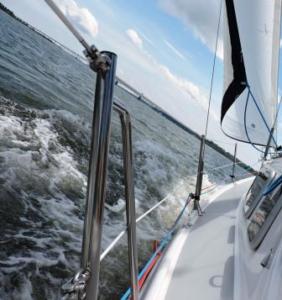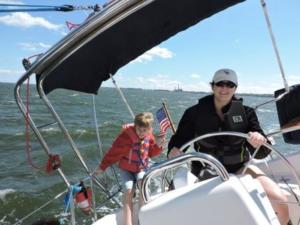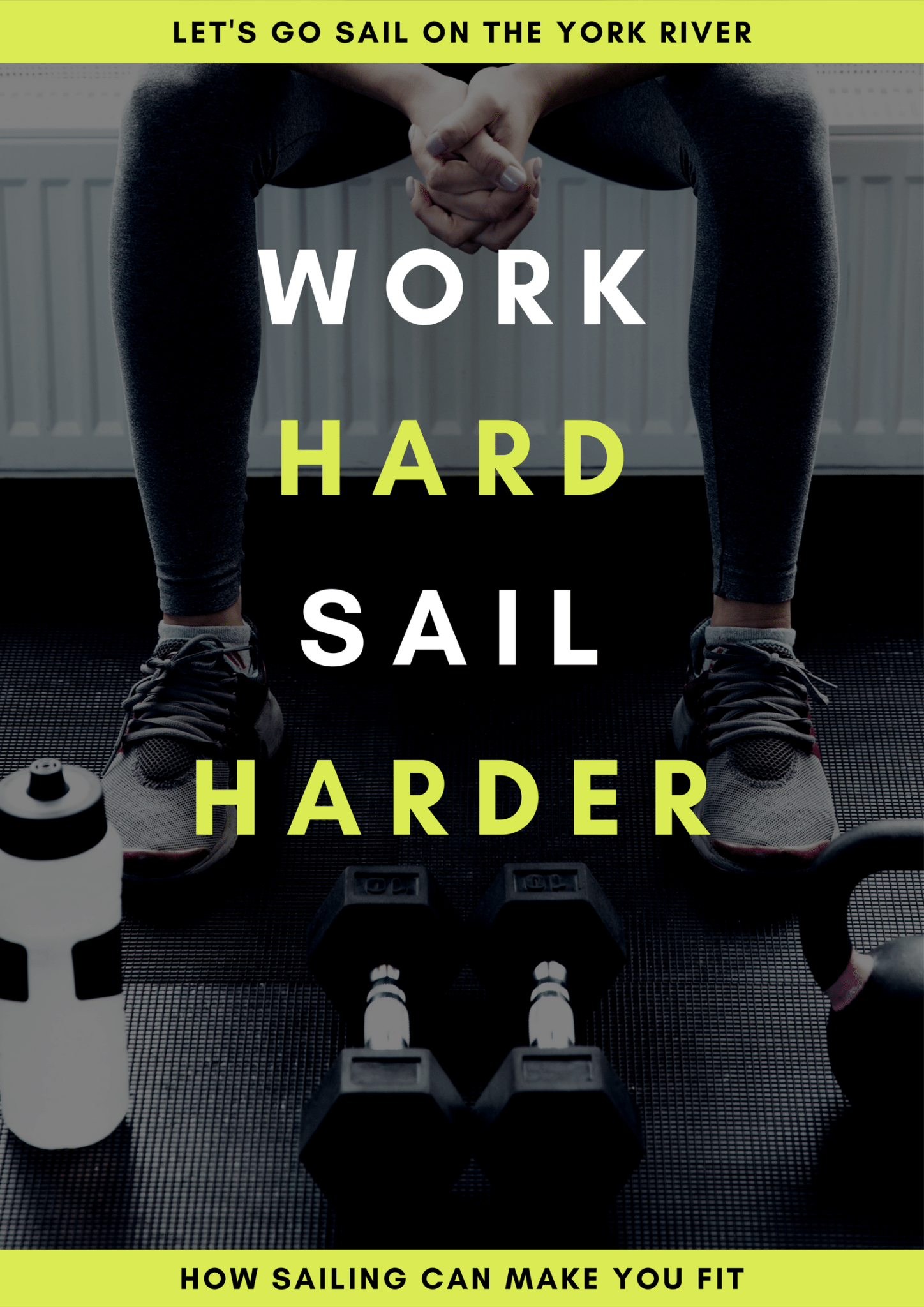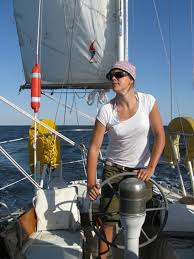Sailing can make you physically fit and keep you that way. If you work out at the gym, work on the boat becomes that much easier. Sailing is quite an adventure for one’s muscles, without that much effort.
The very activity of getting on and off a boat takes some exertion, especially at extreme low tide. The rule is to keep both hands free so that you have one hand for the dock (piling) and one for the boat (shroud). Be careful not to jump onto the boat as that will damage the knees. Jumping into a small boat will send you ass over teakettle into the drink. Check to see if anyone saw you.
 To stay fit by sailing, keep all body movements fluid. As the sailboat heels, it gently requires tightening of certain muscles to retain one’s balance. People find their way by propping one foot here and another there. Standing requires its own set of muscle contractions as the boat sways in the wind and the waves. It’s seldom strenuous but still kinetic.
To stay fit by sailing, keep all body movements fluid. As the sailboat heels, it gently requires tightening of certain muscles to retain one’s balance. People find their way by propping one foot here and another there. Standing requires its own set of muscle contractions as the boat sways in the wind and the waves. It’s seldom strenuous but still kinetic.
Hoisting the sails requires upper-body strength to pull down the halyard. Done correctly, it should stress the back muscles but not to any great degree. As the sail reaches 80% of the proper height, the weight increases and the line should be transferred to a winch. Turning the winch handle requires some strength, especially at the end of the process. You’ll get used to it.
Tacking
Pulling the lines (aka sheets) requires some deftness in the arms, again nothing too rigorous. As the boat tacks through the wind, the jib sheets are loosened on one side and pulled on the other to bring the jib to the leeward side. It’s like a bullfighter turning his cape as the bull passes through. Timing is important, as is quickness. To stay fit by sailing, it’s good exercise for the arms as long as you don’t extend them out too far. That could eventually hurt the trapezius muscle or the rotator cuff. Sailors who turn the jib for a living sometimes develop a reverse form of tennis elbow. The conventional fabric brace used by tennis players is excellent for sailor to reduce the stress.
Docking requires pulling on lines, but not much. Most of the work should be handled ahead of time by the engine moving the boat into proximate position. You can’t stay fit by sailing if you fall off now.








